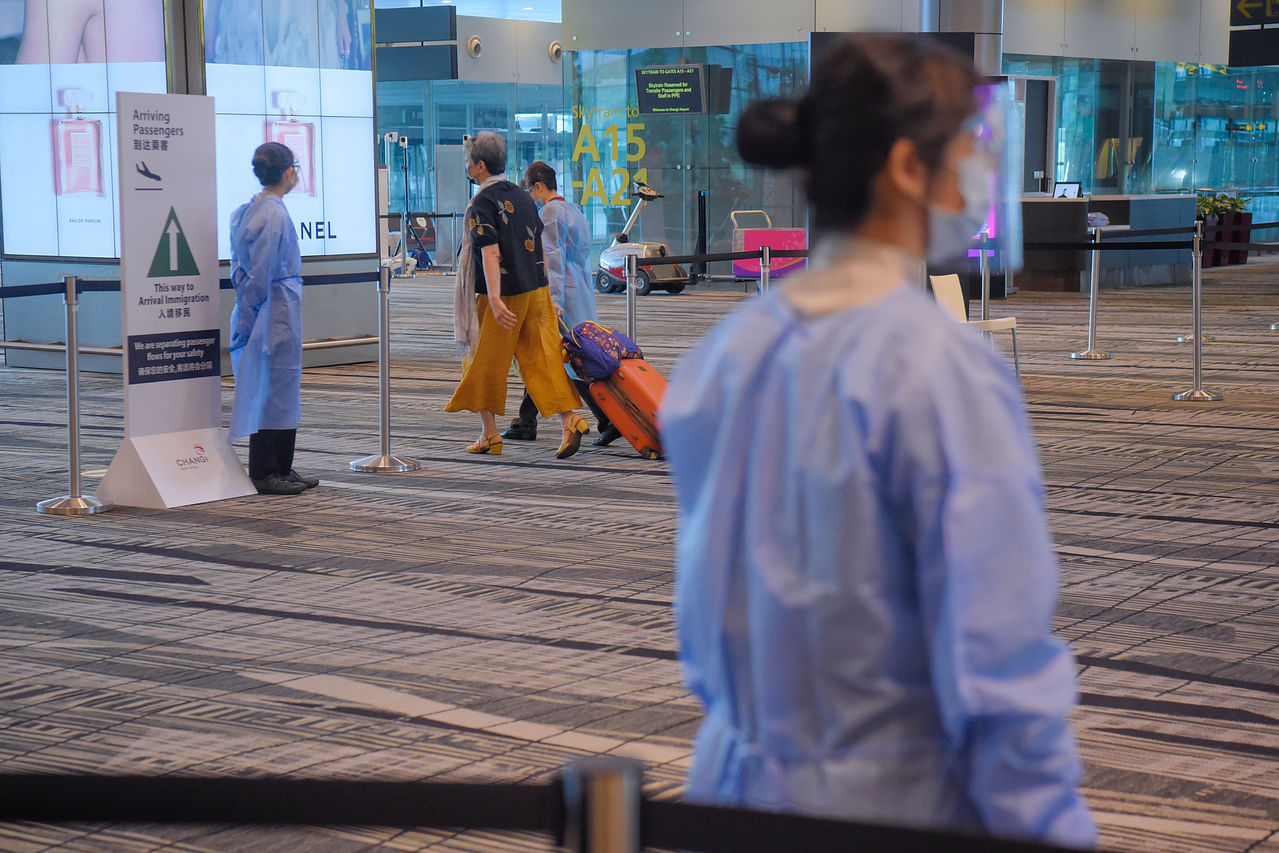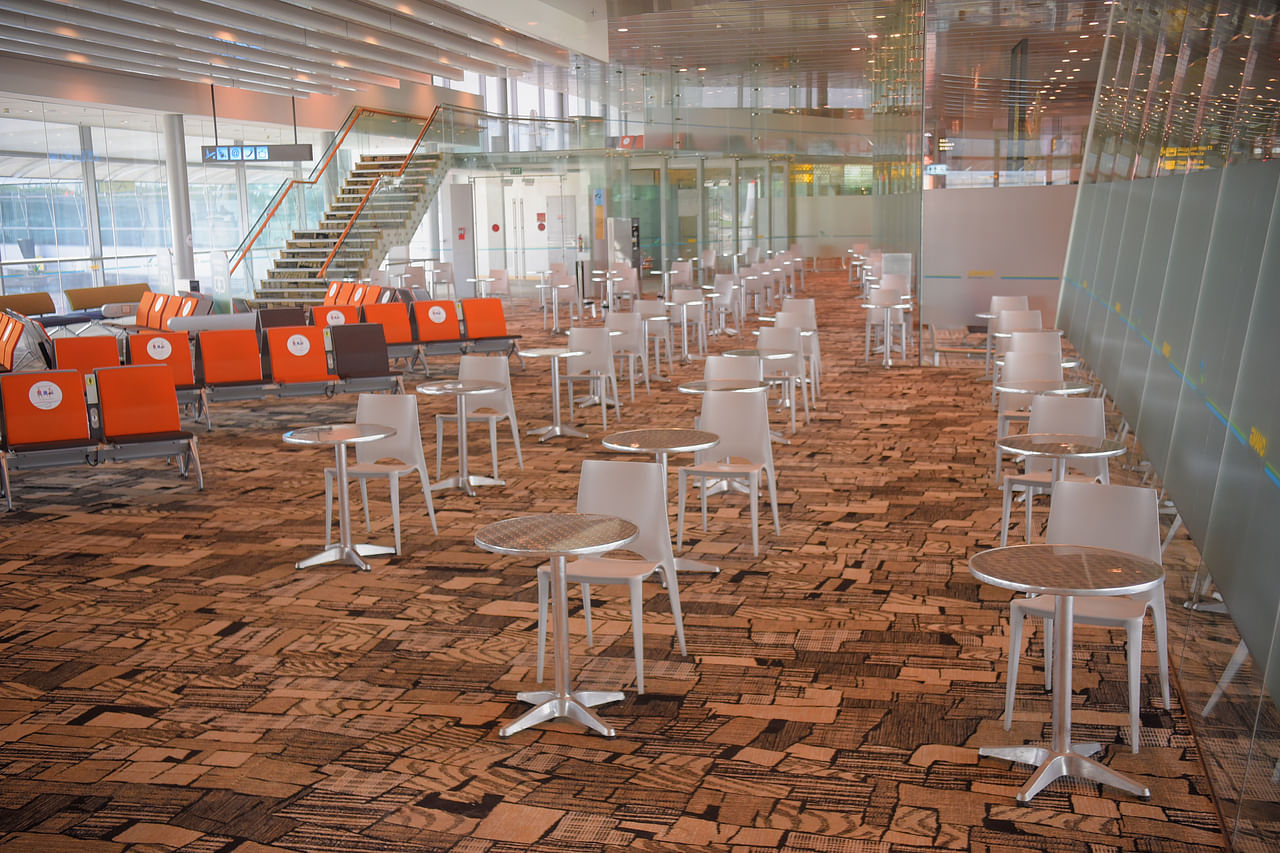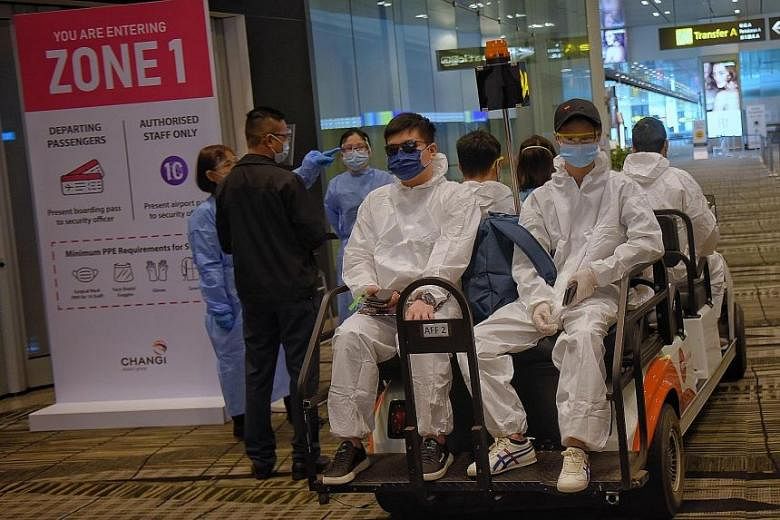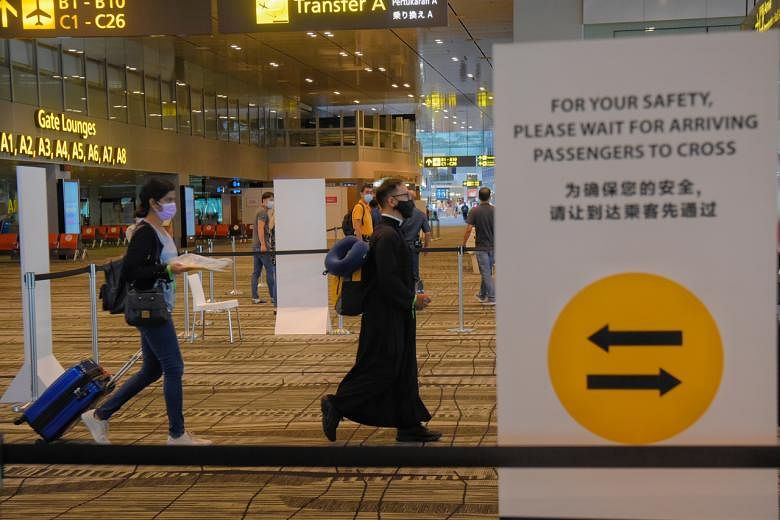SINGAPORE - Changi Airport Group (CAG) will segregate some 14,000 airport workers into three distinct zones, with strict measures to ensure that the 4,400 workers in the highest-risk zone are protected from Covid-19 and isolated from other staff and the public.
Other measures to reduce the risk of transmission include testing workers in the highest-risk zone more frequently, deploying only younger and vaccinated workers in this zone and ensuring that they wear the appropriate personal protective equipment (PPE) at all times.
Travellers from "very high-risk" countries will be escorted to remote gates in Terminal 2 - which is currently closed for renovation - for immigration clearance, and then transported directly to their quarantine facility from the gate by bus, said CAG on Monday (May 24).
These new measures are being introduced progressively and will be fully in place when Changi Airport terminals 1 and 3, as well as Jewel Changi, reopen to the public at the end of the heightened alert period on June 13.
This is a fundamental redesign of the airport's operating processes, said CAG chief executive Lee Seow Hiang at a press conference. It is based on the assumption that transient contact with all incoming travellers - previously deemed to be low risk - is actually risky, he added.
The measures are taken out of an abundance of caution after a cluster of more than 100 people, many of whom had contracted the more infectious B1617 variant, emerged this month, Mr Lee said.
"We stand guided by the best advice," he added, noting that in the past, prolonged activity was seen as high risk. This has since changed, with any kind of activity in zones where workers interact with passengers regarded as risky.
"I don't want to speak on behalf of experts (but) our understanding of the B1617 (variant) is evolving still. So we are doing the best we can from our own operational experience, looking at the possibilities," he said.
The latest measures come after CAG conducted an investigation and operational analysis of the airport cluster.
Public meeting areas in the airport will be considered lowest risk (Zone 3), while the departure immigration area and the central transit area of the airport are the next higher-risk areas (Zone 2).


The departure and arrival gates, arrival immigration hall and baggage claim hall are considered the highest-risk areas (Zone 1).
As an added precaution, passengers from "very high-risk" countries will not go through T1 or T3, CAG said. Instead, they will be escorted to remote gates in T2 and taken directly to their quarantine facility from the gate.
When asked, CAG did not specify what these "very high-risk" countries were, only saying that the risk assessment is dynamic.
At T1 and T3, all arriving passengers will also be separated from departing travellers, with each group having a set route to and from the terminal gates.


Previously, there were no segregated routes for passengers departing from Singapore and passengers arriving from low-risk countries.
These lower-risk passengers, who are unescorted, have to proceed straight to immigration, collect their baggage and take their on-arrival Covid-19 test. Mr Lee said any contact between such passengers is considered transient.
But with the B1617 variant, CAG is not taking such transient interactions lightly, he added.
CAG also emphasised that incoming passengers from high-risk countries are already segregated and escorted by airport staff upon arrival. This will continue with the new operating model.
Meanwhile, airport workers will be cohorted so as to avoid cross-deployment between the three zones, and those working in Zone 1 cannot leave their zone throughout their shift.
There will be physical access control points manned by airport staff to ensure Zone 1 workers do not intermingle with other workers.
All workers in Zone 1 will also have to wear full PPE - which includes a surgical or N95 mask, a face shield, gloves and a surgical gown - at all times, except during meal times and toilet breaks.
Departure gates and areas for passenger amenities have been converted into dedicated dining and rest areas for these workers, and they must got through the proper PPE donning and doffing procedures when entering or leaving these rest areas.
There will be 14 rest areas and toilet facilities for Zone 1 staff across the airport.
Additional training on PPE protocol will be given to workers, and more audits and spot checks will be carried out, said CAG.
In addition, only younger, fully vaccinated workers will be deployed to Zone 1.
"This does not mean workers will lose their jobs. If you, for various reasons, cannot be vaccinated, we believe there are enough in zones 2 and 3 (for redeployment)," Mr Lee said.
CAG said it is aiming to get more than 90 per cent of Zone 2 and Zone 3 workers vaccinated in the coming weeks.
When asked how many airport staff have been fully vaccinated, Mr Lee would only say that more than 90 per cent of front-line staff have received both vaccine doses, while the vaccination rate among general airport workers was in the high 80s.
The testing regime for workers will be stepped up as well.
Zone 1 workers will need to take a polymerase chain reaction (PCR) test every seven days, up from the current 14 days, and undergo a rapid antigen test on the third day.
CAG said it is planning to introduce daily non-invasive tests for Zone 1 workers at the end of their shifts to give them peace of mind when they go home to loved ones.
It did not specify what these non-invasive tests would be, though Mr Lee said CAG is looking closely at technology like breathalyser tests.
Zone 2 and Zone 3 workers must take the PCR test every 14 days instead of 28 days currently, and a rapid antigen test on the seventh day of each testing cycle.
Given the recent reports of Covid-19 possibly being spread via airborne transmission, CAG will also install portable high-efficiency particulate air filters in key places, such as rest areas for workers, to mitigate the risk of the virus spreading that way.
These filters are similar to those used in hospitals.
When asked how long he expects these new measures to last, Mr Lee said the new operating model "will be with us as long as Covid-19 is with us".
It is also scalable should current border restrictions be lifted, he added.
Mr Lee was also asked whether these new measures were being implemented too late since the B1617 variant has been circulating in other countries for months.
In response, he said the new measures were adopted in recognition of a "deeper understanding" of the B1617 variant. He noted the World Health Organisation had issued an advisory about possible airborne transmission only earlier this month.
He added: "While we have had successful measures over the past year to protect workers and passengers, the virus remains a highly elusive one. It penetrated our defences and caused an infection to spread across our community, causing distress and anxiety. We deeply regret this.
"With our airport partners, and together with the authorities, we have worked hard to reinvent our operating processes and enhanced our protocols so that we can decisively ring-fence and segment the zone serving arriving passengers, regardless of where they are flying from."
















